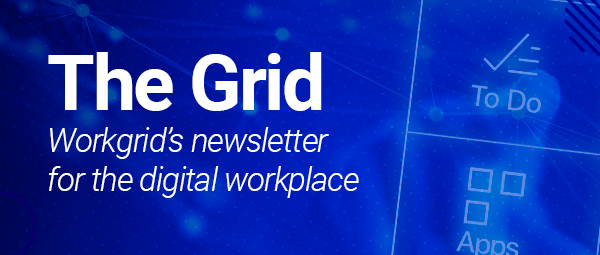The digital workplace hasn’t been built for employees
Organizations have been working hard to optimize the digital workplace. They’ve delivered all the tools, platforms and resources employees could possibly need to be effective. Yet, the employee experience continues to suffer, with 61% of American employees saying they are burned out at work.
Why?
Because, despite their best efforts, organizations typically fail to consider the needs of the one audience that matters most – their employees.
This isn’t an intentional oversight, simply a function of human nature. People are inclined to look out for their own interests first, and we’ve been seeing that instinct play itself out across the workplace. HR implements best-in-class tools that meet the needs of power users on their team. Internal comms focuses on apps that make it easier to share information in a compelling way. Meanwhile, IT keeps a vigilant eye on the bottom line, balancing the need to deliver the right solutions with the directive to keep costs low.
But what about the people who have to interact with all these solutions?
Technology is making it hard for employees to work
The pandemic has forced us all to rethink the long-standing paradigm of work. Flexibility is finally taking precedence over face time in the office, people are learning to collaborate in ways we never could have imagined possible and, in many cases, workers are more productive than ever before.
These benefits haven’t been without a cost, though.
While technology has enabled employees to work wherever and whenever it’s convenient for them, the influx of apps, communication channels and workstream collaboration platforms in the workplace has created some challenges.
Employees now face a constant battle for their attention and a ceaseless need to always be tuned in. The prevalence of digital friction makes things even worse. The simple act of work isn’t so simple any more, with employees wasting a sizeable portion of their day app hopping, with 68% of workers toggling between apps up to 10 times an hour. As such, productivity drops by up to 40% as employees waste a sizeable chunk of their day context switching, app hopping and, even worse, searching and reviewing the wrong information.
This war on attention is a never-ending drain on the finite mental and emotional resources of employees. It’s creating a wellness strain that needs to be addressed.
So what steps can you take to alleviate the stress and frustration of employees and help them work more effectively?
A simpler work experience = a better employee experience
Employees can’t solve the growing problems of stress and burnout on their own. These can’t be solved by multi-tasking or meeting-free Fridays, and certainly won’t be solved by working longer hours.
Your employees need your help to do the job they were hired for. To get rid of all the roadblocks that steal time from meaningful work, they need you to see them as they are and to understand their challenges – specifically around how time-consuming it is for them to complete some of the simplest tasks.
Checking time-off balances or payslip details can require a dozen or more clicks across multiple unfamiliar systems, a significant interruption to the work day.
Processing procurement and expense approvals involves a time-consuming process of logging in and out of disparate systems – taking time away from more strategic priorities.
Searching for information or trying to work with service departments like HR and IT for answers to common questions can consume hours every week, dragging down productivity and damaging morale.
![[asset] employee-computer-stock](https://images.ctfassets.net/z7p73u8c0thn/5kVjOKQWBcTO6ZXCmBeSgG/eecd2644991bd2249dd627fc2614d3ed/annie-spratt-g9KFpAfQ5bc-unsplash__1_.jpg?w=799&h=501&fl=progressive&q=60&fm=jpg&bg=transparent)
Employees spend, on average, at least two hours a day (25% of their work week) looking for documents, information, or people they need to do their jobs. (Source: Human Resources Director)
It doesn’t matter how highly ranked your tech stack is – if your employees are losing time to any of these issues (or the dozens of other examples just like them), your digital workplace is failing them.
But you can fix it, simply by thinking about things a little differently.
How can you optimize the tech stack: modernize legacy systems, identify redundant apps and ensure employees know what tools to use and when?
How can you simplify work to bring important tasks, information and communication directly to employees – within the flow of their work and in the channels they prefer – so they don’t have to forage for those important items themselves?
How can you create a unified experience that abstracts employees away from the gates and complexity of enterprise systems, while still providing them with the specific information, features and functionality they need?
How can personalization help you deliver targeted, contextual, high-priority communications that are more likely to be seen, fostering greater alignment and awareness?
How can automation enable workers to find time-sensitive information and get answers to frequent questions, or even proactively assist employees by promoting information at the right time?
The solution to digital workplace simplicity can be found in the answers to these questions. Give them some thought – your employees need you.
![[asset] Context-Switching-chart](https://images.ctfassets.net/z7p73u8c0thn/4Kh0vKaLxtL9qDEgbjfnom/63d91074ac82d59aeaf212cad03c72f0/Context-Switching-1.png?w=536&h=336&q=60&fm=png&bg=transparent)



